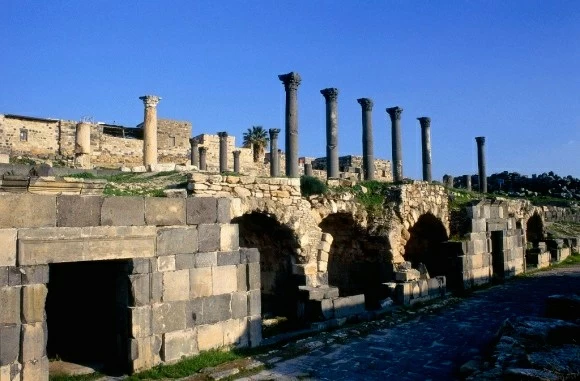City of Gadara
Little is known of the earliest history of Gadara, a hilltop site in the north-west corner of Jordan with grand views over Lake Tiberias, the Yarmouk River and the Golan Heights.
It is associated with the story of Jesus casting out demons and sending them into a herd of pigs which rushed down a steep slope and drowned in the lake (Matt. 8:28_34). The exact location of the miracle is unknown, but it could hardly have been Gadara itself as it is too far from the lake.
In the Hellenistic era, Gadara changed hands like most of Jordan between the Ptolemies and the Seleucids – parts of the city wall and the base of a temple date to this time. It was taken by Alexander Jannaeus in 83 Bc, and some Nabataean finds indicate that they too were here briefly. Liberated from Hasmonaean rule by Pompey in 63 BC, its fall glory came in the Roman period as one of the Decapolis cities.
Gadara was noted for its rich intellectual life and as the birthplace of several famous philosophers and poets of the ancient world, in particular, the Cynic philosopher Menippus who lived in the 3rd century BC, and Meleager and Philodemos in the 1st-century c. The Gadarenes also reveled in the famous hot springs in the valley below, after which, wrote Strabo, they returned to ‘the cooler heights of the city, solacing their leisure with plays performed in the theatres.






